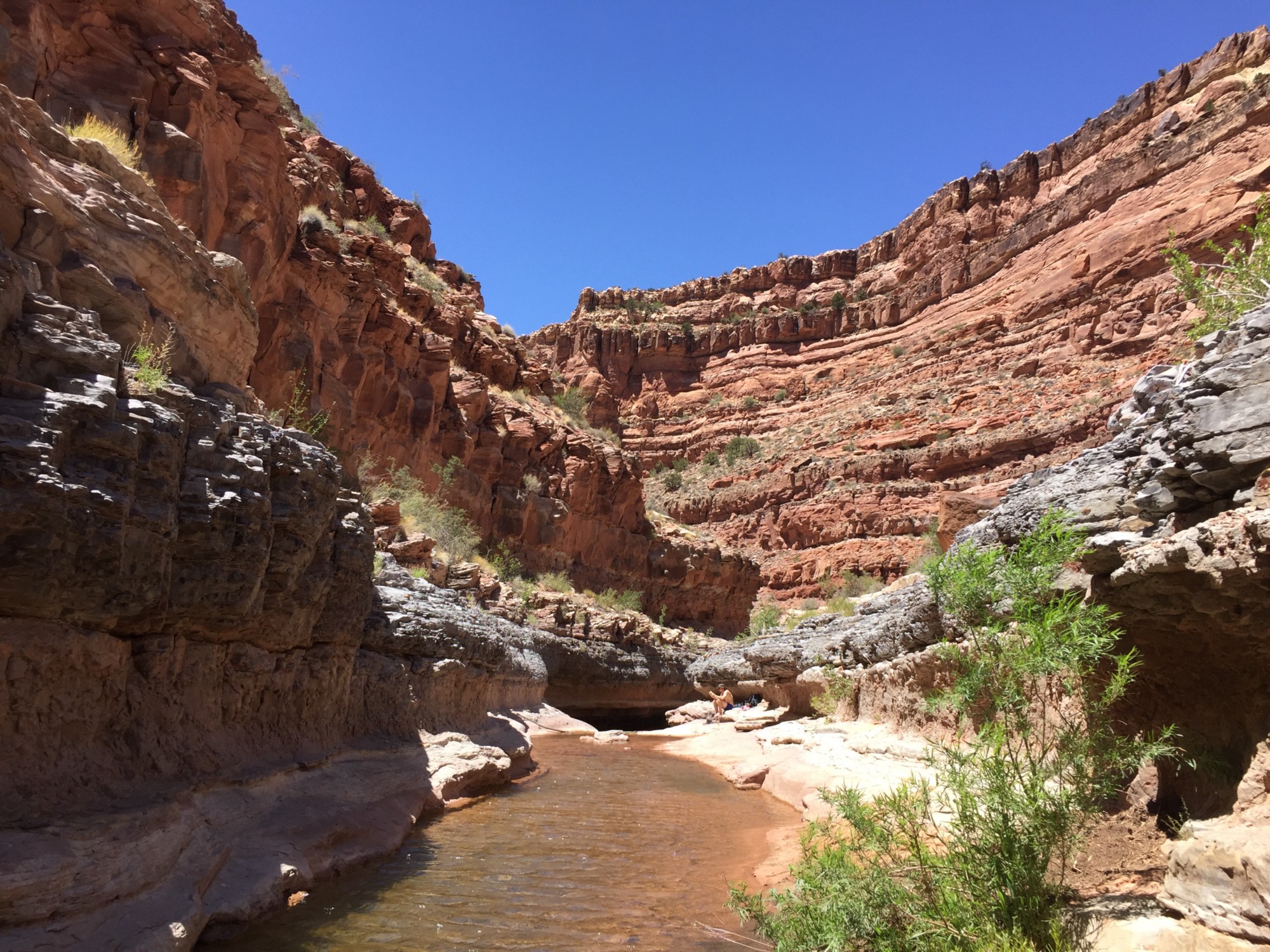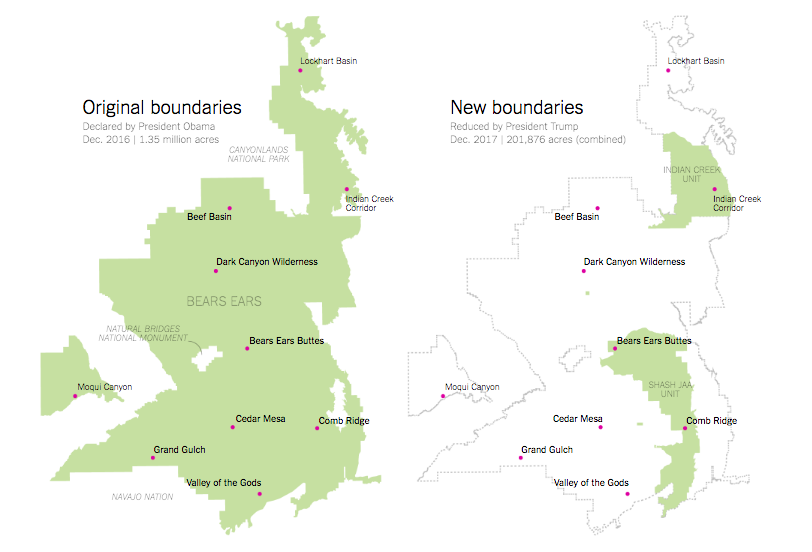Uranium mining poses renewed threat to iconic landmarks in the American Southwest
Some places are too precious to risk.

Dark Canyon, Utah. Courtesy: Ross Sherman
There’s nothing quite like exploring the red, sandstone canyons of southern Utah.
I spent the long Memorial Day weekend backpacking in Dark Canyon, a stunning and remote part of the Dark Canyon Wilderness between Canyonlands National Park and Bears Ears National Monument. The trip had a little bit of everything: scrambling down a steep, 1,500-foot talus slope, jumping into secluded swimming holes along the canyon, and even stumbling upon a bobcat hunting its prey.
I’m happiest when I’m outdoors, and I’ve always been fascinated by the natural world. Growing up on the coast of Maine, I would spent a lot of time wading through the tidepools scattered along our notoriously rocky beaches, turning over rocks to see what critters were hiding underneath. You could also often find me exploring the many acres of open space my hometown had to offer. One cold, winter day, I spent an entire afternoon trudging through deep snow in the woods behind my house to follow the tracks of a ring-necked pheasant to its roost.
That passion for nature led me to Colorado, where I went to college and now live. As much as humanly possible, I’ve tried to take advantage of all the West has to offer — and let me tell you, it’s a lot. Every time I’m looking up at the stars without the glare of the Denver skyline, or breathing in the crisp, fresh, alpine air of the Rocky Mountains, thick with the scent of ponderosa pine, douglas fir and blue spruce, I’m reminded of how important these places have been to me in my life. And I’m reminded that we all need access and time in the outdoors — not just me, but everyone; not just now, but forever.
Past U.S. presidents have recognized the importance of America’s natural beauties, but that could be changing under the current administration.
Back in December of 2016, President Obama created Bears Ears National Monument — protecting 1.35 million acres of wind- and river-carved sandstone, rushing creeks, and ancient Native American ruins from development and mining. Almost exactly one year later, President Trump announced he was reducing the size of the monument by 85 percent, or by over one million acres, and splitting the monument into two distinct ‘islands.’
As you can see in the maps below, Dark Canyon is no longer protected as part of the national monument.

Courtesy: Nadja Popovich, New York Times
Recognizing the folly and danger in President Trump’s decision, tribal nations and environmental organizations sued the administration, arguing that the President stepped outside his legal authority by shrinking Bears Ears and another unique national monument, Grand Staircase-Escalante. These cases are still making their way through the courts.
You might be thinking: Why would a U.S. president open up national treasures to defilement?
In this case, lobbying from uranium mining interests appears to have influenced the Trump administration’s decision to shrink Bears Ears. According to the New York Times, there were more than 300 uranium mining claims within the monument’s original boundaries; under the new configuration, the vast majority of those claims conveniently lie in unprotected areas.
The Trump administration is busy creating optimal conditions for uranium mining not only in Bears Ears, but just outside the boundaries of Grand Canyon National Park as well. Adjacent to the Grand Canyon itself, the canyon of the Havasupai reservation, one of the most magical of our natural treasures, is directly threatened by a uranium mine preparing to go into operation on the bluffs above.

Courtesy: shilo2006 via Flickr, CC BY-SA 2.0
In order to move forward, the administration would have to reverse a 2012 decision by President Obama’s Secretary of the Interior, Ken Salazar, that imposed a halt on uranium exploration and the staking of new claims on one million acres near the Grand Canyon.
A recent report published by Environment America Research and Policy Center outlines why uranium mining poses a terrible environmental threat, and why Secretary Salazar’s 2012 action to protect the Grand Canyon was the right one. If uranium were to leak into the Colorado River, which runs through both Dark Canyon and the Grand Canyon, it would contaminate the drinking water of 40 million Americans — including the populations of Phoenix, Las Vegas and Los Angeles. Already, 15 springs and five wells near Grand Canyon National Park contain uranium concentrations above the safe limit for drinking water.
Apart from water contamination, uranium dust gets into the air, and if inhaled, can lead to lung cancer. The leftover waste rock and dirt from mining activities remains radioactive for hundreds of thousands of years, and isn’t easy to clean up. Uranium mining has left a ‘toxic trail’ everywhere it has occurred.
I try to imagine, years from now, going back to Dark Canyon or the Grand Canyon after uranium has been mined there. I see a massive facility on what was once a pristine bluff, a contaminated waste pile near a creek. How would we justify having ruined these ancient, magnificent places — for the wild inhabitants, for ourselves, and for our children?
It’s worth noting that while Trump’s Forest Service has called for renewed uranium mining in the West, the Department of the Interior has supported the 20-year uranium mining moratorium in lands surrounding the Grand Canyon. The Trump administration would be wise to listen to what in this case is its ‘better half’ and abandon proposals to mine uranium in the Grand Canyon and elsewhere.
Meanwhile, groups like Environment America, as well as individuals like myself, will fight for our legacy of spectacular open spaces every step of the way.

